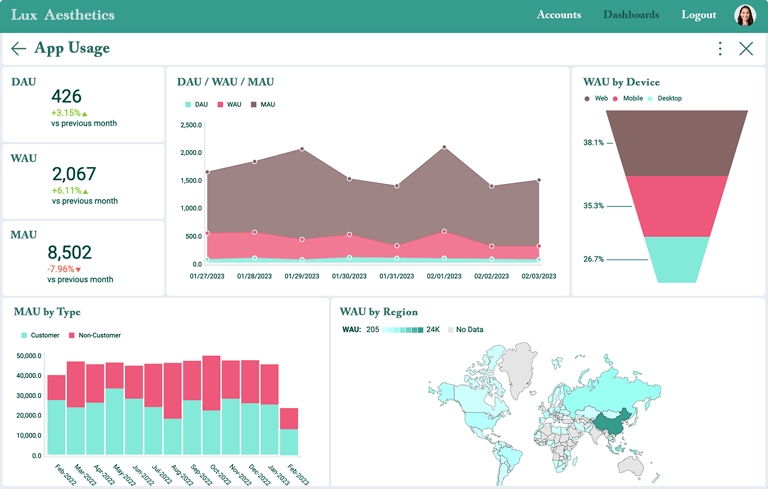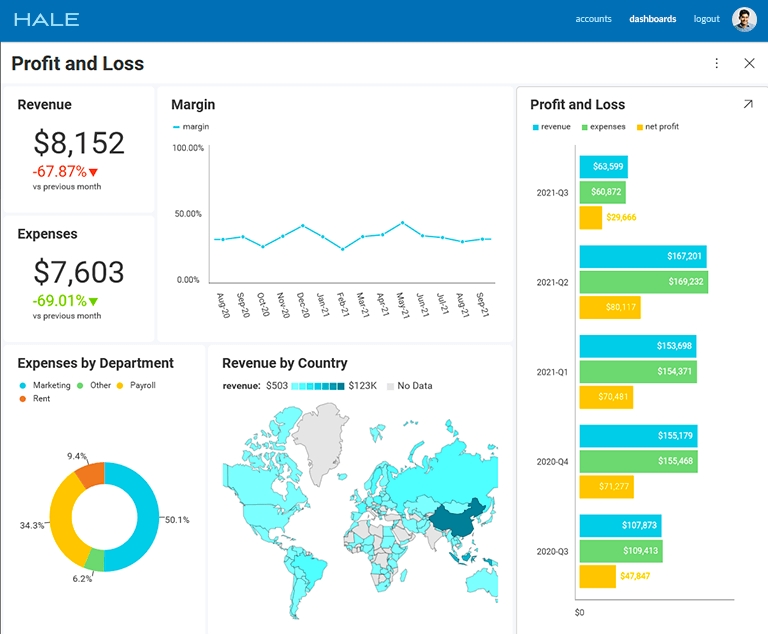Embedded Analytics
Embedded analytics has modernized how businesses interact with data, turning raw information into actionable insights directly within everyday workflows. This integration is becoming essential across industries, from finance to healthcare, enhancing user experiences, and driving efficient decision-making.
What Is Embedded Analytics?
Embedded analytics integrates data analysis and reporting capabilities seamlessly into software applications. This approach allows users to access powerful data visualization and dashboard features without leaving their business applications, promoting a more intuitive and productive environment right in the context of their everyday business applications.Why Businesses Use Embedded Analytics?
Embedded analytics is a versatile tool employed across industries, serving as a powerful ally for businesses that want to remain competitive. Whether in finance, healthcare, or manufacturing, embedded analytics facilitates tasks like monitoring business performance, optimizing workflows, enhancing customer experiences, and driving informed decision-making across various domains.Benefits of Embedded Analytics
Embedded analytics offers several key benefits, making it an indispensable tool for modern businesses:- Efficiency: Streamlines processes by integrating analytics into user applications, reducing the time to insight.
- Quicker Time to Market: Leveraging the expertise of an embedded analytics vendor allows you to bypass the lengthy and complex process of building your own analytics solution from scratch.
- Customer Satisfaction: Improves user experience by providing relevant data insights within the natural workflow.
- Cost Savings: By integrating Reveal’s analytics, you eliminate the need for extensive in-house development for analytics capabilities, allowing your developers to focus on the core functionalities of your application.
- Enhanced Decision-Making: Provides real-time data insights, promoting timely and informed business decisions.
- Competitive Advantage: Keeps businesses ahead by enabling quick adaptation to market changes and customer needs through data-driven strategies.
Embedded Analytics Examples
Here are a few examples of how ISV, SaaS, and finance companies use embedded analytics to their advantage:Embedded Analytics for ISVs
By seamlessly embedding customizable analytics capabilities into their applications, Independent Software Vendors (ISVs) can significantly elevate their software’s value proposition and meet the growing demand for BI capabilities. This can enhance client retention and software renewals while unlocking new revenue streams with additional features. Furthermore, embedded analytics solutions are equipped with robust security features, ensuring data protection and regulatory compliance. This commitment to security and value creation benefits ISVs and strengthens customer trust and satisfaction.Embedded Analytics for SaaS
Embedding powerful analytics capabilities into SaaS application ecosystems enhances operational efficiency and drives strategic growth initiatives. By leveraging data to inform decision-making processes, businesses can adapt to evolving market demands, innovate confidently, and maintain a competitive edge in their market. Moreover, data helps identify new product or service opportunities, allowing businesses to align offerings with user needs and sustain customer satisfaction over time.
Embedded Analytics in Finance
Embedded analytics is used in the financial industry to optimize budgeting, financial planning, forecasting, portfolio management, and more. Embedded finance analytics help financial services providers process and analyze key data such as customer acquisition costs, loan requests, gross profit, etc. With the insights gained, financial institutions can promote the right services to customers, adding more value to their customers and strengthening their business relationships.
Reset Password
Enter your email address and we'll send you a link to reset your password.
Back to Login
Please wait...